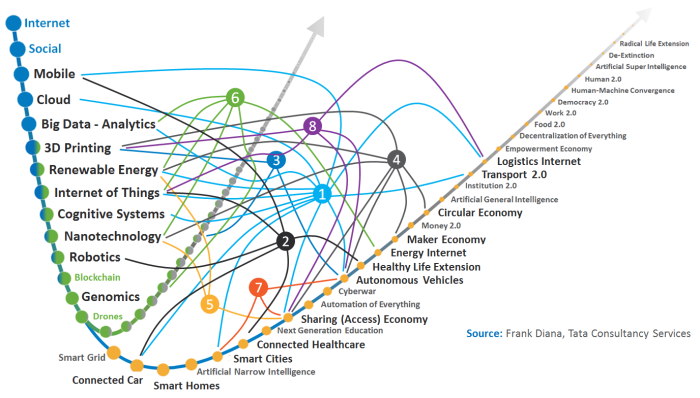The National Retail Federation (NRF) kicked off it’s annual event this week, and with it comes an opportunity to consider the future of retail and the type of changes we might expect. Colleagues at Tata Consultancy Services (Kevin Mulcahy, Bill Quinn, and April Harris) pulled together their thoughts ahead of the event. You can explore the future of Retail via this Article, and/or the short video below.
Maker Economy
Supply Chain of the Future: Humans Optional?
As science and technology continue their rapid advance, traditional constructs are challenged; Supply chains are no exception. Here is a brief video that highlights many of the advances that transform how we think about supply chains in the future. As it wraps up, a curated set of videos that touch on several of these advances is provided. Special thanks to Bill Quinn, Rose Castellon-Rodriguez, and Kevin Mulcahy for producing the video.
Be sure to visit the Reimagining the Future YouTube Channel to explore additional topics.
Disruptive Power Lies at the Intersections
The content of this post was updated on February 16, 2017 in a new post titled Intersections Promise to Drive Multiple Paradigm Shifts
When I first started using the term “Combinatorial”, people thought I was making words up. Although I’d like to take credit for the word, I first came across it when reading The Second Machine Age, a fascinating book by Andrew McAfee and Eric Brynjolfsson. I remember thinking that it was a perfect word to capture the amplification of both innovation and its disruptive power. By now, readers of this Blog have seen the foundational Visual that describes the digital foundation, innovation accelerators, and disruptive scenarios. What the visual does not convey without the associated narrative is the power of combinatorial.
If we build on top of the visual, we begin to see the complexity at the intersections, the amplification of disruptive power, and the broad implications for the future.

The best way to describe this phenomenon is through examples, so let’s look at six combinatorial scenarios as an overlay. The visual is a bit overwhelming, so a better way to follow the various paths is via this PDF. Here is a description of each scenario. The numbers in the visual above map to the scenarios below, and the colors show the combinations:
Is Any Industry Safe From disruption?
I recently dipped my toe into the Metals and Mining waters and walked away with the reinforcement that every industry is susceptible to disruption. There has long been a feeling that non-digital industries are safe from the power of disruption. In a recent piece on a New Economic Paradigm, this topic is explored in greater depth, questioning the long term viability of not just current industry structures – but the economic paradigm itself.
Disruptive scenario analysis should be a critical focus for every business across every industry. In addition, as these scenarios converge, the implications of this convergence to a given industry or industries must be understood. The anchor visual below identifies a number of scenarios to consider. Let’s take a look at disruption in the context of the Metals and Mining industry, as well as some possible industry responses.

The Maker Economy
“Any time you give the means of production to everybody, it changes the world.” Chris Anderson, CEO of 3D Robotics
So it goes with the Maker Economy – otherwise referred to as the Maker Movement. According to Industry Analyst Jeremiah Owyang, the Maker Movement puts power in the hands of people to fund, design, prototype, produce, manufacture, distribute, market, and sell their own goods. According to youth market research firm Ypulse, 69% of millennials wish they could create a new product, and 81% would be interested in helping a company design one. This shift in production also shifts power from large, capital intensive enterprises to individual prosumers. As the focus on a next economy increases, so does the likelihood that it is driven by networks of prosumers versus large corporations.
This movement is not a future movement. According to the Infographic below, 135 million makers in America are already growing local economies and creating new jobs – contributing 18 million small businesses in the U.S. and accounting for two out of every three new jobs. When viewed through the lens of 3D Printing Forecasts, the future looks bright as well. One such forecast has the 3D Printing Industry becoming a $16 billion global industry within the next five years, with a 45.7 CAGR. It is also reviving the hardware sector, as VCs pumped $848 million into hardware start-ups in 2013 – nearly twice the prior record of $442 million set in 2012.
3D Printing
In my continued look at disruptive scenarios, the focus shifts to 3D printing. Growth in this key innovation is expected to accelerate to $10.8 billion by 2021 according to Goldman Sachs. The economic implications are significant: Research by McKinsey Global Institute suggests a possible impact of $550 billion per year by 2025. Some believe that 3D printing will play a crucial role in launching a third industrial revolution at a personalized level.


